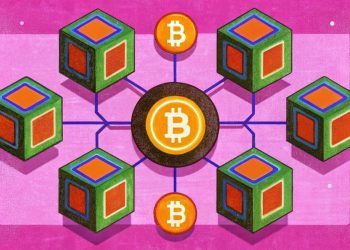
A New Generation Drives Blockchain Innovation and Disrupts Traditional Forecasting
In the ever-evolving world of blockchain technology, a wave of young entrepreneurs is making headlines by launching decentralized prediction markets—platforms that are redefining how people forecast and bet on real-world events. These innovators are harnessing the power of blockchain to create transparent, secure, and censorship-resistant spaces where users can wager on everything from elections and sports outcomes to cryptocurrency prices and technological breakthroughs.
As these platforms gain traction, they are not just offering new forms of entertainment and speculation—they are also pushing the boundaries of financial inclusion, democratizing access to markets, and fostering a new era of trustless, peer-to-peer economic models.
Who Are the Young Visionaries Behind Decentralized Prediction Markets?
At the forefront of this movement is a cadre of ambitious young founders, many of whom have grown up immersed in the digital economy and decentralized finance (DeFi) culture. Among the most notable is Jeremy Gardner, a well-known blockchain entrepreneur and early advocate for DeFi. Gardner, along with a cohort of like-minded innovators, has been instrumental in building platforms that lower the barriers to entry for anyone interested in prediction markets.
These entrepreneurs are often in their twenties or early thirties, bringing fresh perspectives and a willingness to challenge the status quo. Their backgrounds range from computer science and economics to cryptography and game theory, equipping them with the skills needed to design robust, user-friendly, and secure platforms.
What Are Decentralized Prediction Markets?
Decentralized prediction markets are blockchain-based platforms where users can create and participate in markets that predict the outcomes of future events. Unlike traditional betting or forecasting platforms, these markets operate without centralized intermediaries. Instead, they use smart contracts—self-executing agreements coded on the blockchain—to facilitate bets, resolve outcomes, and distribute winnings.
Users can create markets on virtually any topic, from political elections and sports matches to the price of Bitcoin or the success of a new tech product. The “wisdom of the crowd” effect often leads to highly accurate predictions, as the aggregated bets reflect collective knowledge and sentiment.
How Do Decentralized Prediction Markets Work?
The mechanics of decentralized prediction markets are both simple and revolutionary. Here’s how they typically function:
- Market Creation: Any user can initiate a new market by specifying an event and possible outcomes. For example, “Will Ethereum surpass $5,000 by December 2025?”
- Betting: Participants wager tokens on the outcome they believe will occur. The odds shift dynamically based on the volume and distribution of bets.
- Resolution: Once the event concludes, an oracle—a trusted data feed or decentralized network—verifies the outcome and triggers the smart contract to distribute winnings to those who bet correctly.
- Transparency and Security: Every transaction is recorded on the blockchain, ensuring transparency, immutability, and resistance to manipulation or censorship.
This model removes the need for traditional bookmakers, reduces fees, and opens participation to anyone with an internet connection and a crypto wallet.
The Significance and Impact on the Crypto Ecosystem
Decentralized prediction markets are more than just a novel application of blockchain—they are reshaping the way people interact with information, risk, and finance. Some of the key implications include:
- Financial Inclusion: By lowering entry barriers and eliminating intermediaries, these platforms enable global participation, even from regions underserved by traditional financial institutions.
- Risk Hedging: Users can hedge against real-world risks, such as political instability or commodity price fluctuations, by betting on relevant outcomes.
- Decentralized Governance: Many prediction markets are governed by their communities through decentralized autonomous organizations (DAOs), giving users a direct say in platform rules and development.
- Oracle Innovation: The need for accurate, tamper-proof event resolution is driving advancements in oracle technology, which feeds real-world data to blockchains.
- Enhanced Forecasting: The crowd-based nature of these markets often yields more accurate predictions than polls or expert panels, making them valuable tools for businesses, researchers, and policymakers.
Real-World Examples and Success Stories
Several decentralized prediction market platforms have emerged as leaders in the space:
- Augur: One of the earliest and most established platforms, Augur allows users to create markets on any verifiable event. Its open-source protocol has inspired a generation of similar projects.
- Polymarket: Known for its user-friendly interface and diverse market offerings, Polymarket has attracted significant attention from both retail users and institutional observers.
- Gnosis: This platform emphasizes prediction markets for decentralized governance and decision-making, helping DAOs and other organizations make data-driven choices.
Young entrepreneurs are at the helm of these projects, constantly iterating and expanding the possibilities of decentralized forecasting.
Challenges and Opportunities
Despite their promise, decentralized prediction markets face several challenges:
- Regulatory Uncertainty: Many jurisdictions have complex or unclear rules regarding online betting and financial derivatives, creating legal hurdles for platform operators and users.
- Oracle Reliability: Ensuring that event outcomes are reported accurately and without manipulation remains a technical and governance challenge.
- User Education: New users must understand how to use wallets, interact with smart contracts, and assess the risks involved.
However, these obstacles are also opportunities for further innovation. Entrepreneurs are developing decentralized oracle networks, compliance-friendly market structures, and educational resources to onboard the next wave of users.
The Broader Trend: Youth-Driven Disruption in Blockchain
The rise of decentralized prediction markets is part of a larger movement of young entrepreneurs using blockchain to disrupt traditional industries. From decentralized finance and NFT platforms to supply chain transparency and digital identity, the next generation is leveraging blockchain’s core principles—transparency, security, and decentralization—to build a more open and inclusive digital economy.
Their efforts are not just technical but also cultural, fostering communities that value collaboration, experimentation, and shared ownership. As these platforms mature, they are likely to influence not only the world of crypto but also the broader landscape of finance, governance, and information sharing.
What’s Next for Decentralized Prediction Markets?
With regulatory landscapes evolving and blockchain adoption accelerating, the future looks bright for decentralized prediction markets. Young founders are already exploring integrations with artificial intelligence, cross-chain interoperability, and new incentive models to make these platforms even more powerful and accessible.
As more users discover the benefits of decentralized forecasting and risk management, prediction markets could become a staple of both the crypto ecosystem and mainstream finance. The innovative spirit of young entrepreneurs will continue to drive this evolution, ensuring that prediction markets remain at the cutting edge of blockchain technology.
In the coming years, expect to see even more ambitious projects, global participation, and creative applications—proof that when youth and technology intersect, the possibilities are truly limitless.

















